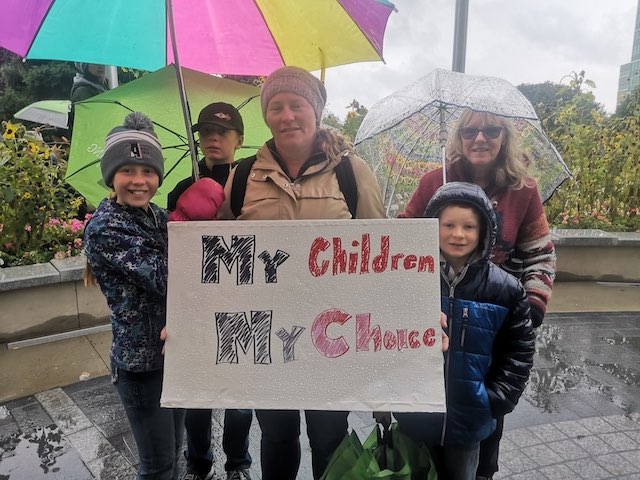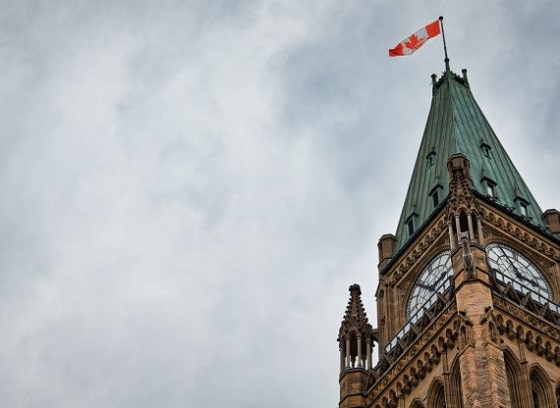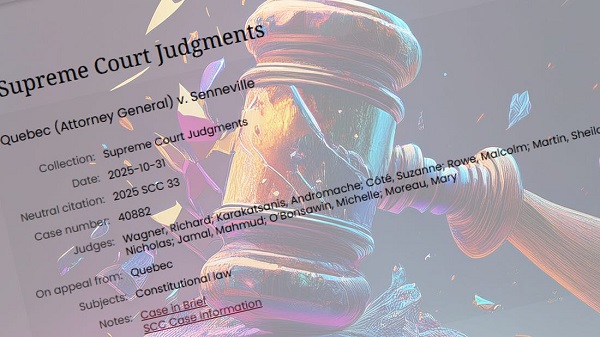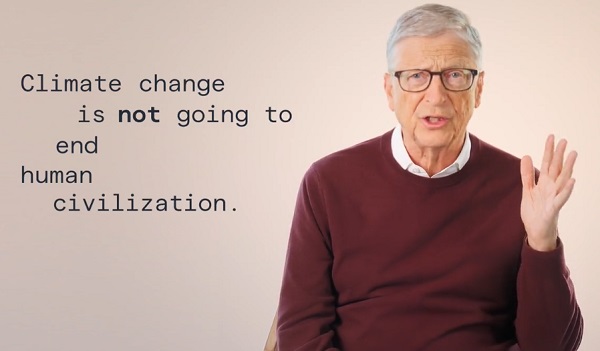Opinion
1 Million March 4 Children announces second event Saturday, Oct 21 – How should we feel about this?




- These protests are supported by a big tent of far-right and conspiratorial groups, including Christian Nationalists, COVID-19 conspiracy theorists, sovereign citizens, and anti-public education activists.
Sounds dangerous. Far-right and conspiratorial groups, Christian Nationalists, COVID-19 conspiracy theorists, sovereign citizens, all mixing it up with anti-public education activists. No wonder I was afraid to go at first! Good thing I don’t depend on the AntiHate.ca website to plan my outings.
Come to think of it I’ve got a couple of questions for AntiHate.ca.
1) Are Christian Nationalists ‘far-right’ or ‘conspiratorial’? Can they be just Christians who like their country a lot? If not, what do we call Christians who like Canada? Just wondering.
2) Are the COVID-19 ‘conspiracy theorists’ the ones who correctly (if annoyingly) warned the lock downs / masks / 1, 2, 3, 4 doses of vaccine would not stop the pandemic? or were they the ones who incorrectly believed all those things would bring that pandemic to an end? Can you see how that could be confusing in 2o23?
3) I didn’t know I had to be afraid of sovereign citizens and anti-public education activists. Can I let my children out of the house while they still exist in Canada?
It’s important there are groups like AntiHate.ca. It’s important Canadians always remember that no matter how much we disagree, almost every single person wants to live their lives in freedom and simply enjoy opportunities. When we descend into hatred, we take society down with us. So thank you AntiHate.ca for watching out for us.
Were there incidents at hate at the 1 Million March 4 Children? AntiHate.ca found some examples. I did not see or hear of any incidents at the Red Deer event. Part of the credit goes to the police. They did a wonderful job of patrolling between the opposing sides in a very relaxed and friendly manner that certainly calmed the tension people would otherwise have felt.


Standing on the sidewalk as protestors streamed past me, I was struck by how different the 1 Million March 4 Children felt compared to other protests I’ve attended.
This was a protest of families. There were pregnant women, new mothers and fathers with their young children, and lots of grandparents. It also featured an intriguing and beautiful mixture of cultures. As protestors strolled past I was reminded of that feeling you get from the multi-cultural festivals that mark so many Canada Day Celebrations.




Fact: On September 20, 2023 a vast array of Canadians representing many cultures and beliefs united at Red Deer’s City Hall Park for the 1 Million March 4 Children.
But: Unlike Canada Day, it felt a little bit like we were going to get in trouble just for being here. Maybe that’s why very few politicians dared to come out in support of this group. I did see Red Deer South MLA Jason Stephan and Red Deer Catholic School Board Member Monique LaGrange. Jason has never been frightened of zagging where other politicians are zigging. As for Monique, she’s been disciplined for expressing her opinion recently and probably felt she had nothing more to lose by being associated with the people AntiHate.ca is warning us about.
Canada’s Prime Minister is convinced the people streaming past me were “phobs”… Transphobs, homophobs, and biphobs (I think he may have invented the last one just as he was writing the post below). According to our Prime Minister hundreds of Central Albertans and the tens or hundreds of thousands of Canadians who gathered on September 20 were there to ‘manifest their hatred’ of 2SLGBTQI+ people. Here’s Trudeau’s post on X.

The Muslim Association of Canada strongly condemned Trudeau’s remarks and called for an apology that has yet to make it’s way into the line up of apologies PM Trudeau seems to make on a daily basis. Here’s part of their statement.
- By characterizing the peaceful protests of thousands of concerned parents as hateful, Canadian leaders and school boards are setting a dangerous precedent of using their position of influence to unjustly demonize families, and alienate countless students.
- On Wednesday September 20th, thousands of Muslims, joined by other faith-based groups, protested to raise their concerns, calling for their rights as parents in relation to their children’s education. Their intent was to be heard, not to sow division. Parents should have the absolute right to advocate for the wellbeing of their children.
As I streamed through my social media feeds last week I could see some of my friends (who I did not see at the protest or counter protest) apparently agree with Trudeau. The most common post was the “no space for hate” meme which is really a beautiful message even if it might be a bit too sarcastic when aimed at the vast majority of those who marched. (I’m OK with sarcasm. I think my family may have invented it.)

By using the word ‘hate’ they seem to be implying the protestors are hateful. Maybe they can come to the next march in October to see for themselves. I did not see messages of hate from the protestors OR from the counter protestors in Red Deer. You can see excellent examples of the signage from both sides in the photos below which show the signs on opposite sides of the street (and the debate).


On top of the signs there were also competing slogans. Chants of “Leave our kids alone” from the protestors were so loud it was a bit difficult to hear the opposing chant. I thought I heard “I was born like this” from the counter protestors.
I heard another chant from the protest organizer on his megaphone. “Don’t interact with the counter protestors. They have a right to be here too.” All in all the Red Deer protest was a bit loud, but far more civilized than advertised. I guess it felt a little bit like democracy is supposed to feel like.
As the protest ended I even witnessed one protestor walk up to a group of 5 or 6 counter protestors. He said (I’m paraphrasing) “I may not agree with you about much, but I respect your right to be here and I just wanted to say thank you for expressing your opinions peacefully.” That was quite a moment for the counter protestors who all looked relieved as they were likely expecting a confrontation. I admit I was stunned. It caught me by surprise and I was unable to get a photo or video in time.
As I looked through the protest signs and briefly chatted with people streaming past me it was clear there was one overwhelming message. The protestors clearly want to be the ones to teach their children about gender ideology. Others are far more concerned about the idea that schools would be keeping secrets with students from their parents who pay the taxes that support the whole system.


I leave the final words to Tim Hoven. Tim is a politically active Central Albertan who tried to take on his local UCP MLA Jason Nixon in a nomination and then ran unsuccessfully as an Independent candidate against him when his nomination was disqualified. Hoven was the local organizer and the main speaker at the Red Deer version of 1 Million March 4 Children.
Business
Federal budget: Carney government posts largest deficit in Canadian history outside pandemic

-
Federal deficit projected to exceed $78 billion
-
This is Ottawa’s tenth consecutive unbalanced budget
-
Every newborn baby in Canada now enters the world with a debt of more than $33,000.
Repackaging record spending as “investments” while offering no credible path back to balance is the opposite of responsible fiscal stewardship, asserts the MEI in response to the tabling of the federal budget this afternoon.
“Canadians should find a deficit this large extremely troubling,” says Emmanuelle B. Faubert, economist at the MEI. “The attempt to disguise it under a new wave of so-called investments makes it even more concerning.
“It’s one thing to spend money you don’t have; it’s yet another to shirk responsibility for it.”
The Carney government is projecting a deficit of $78.3 billion for 2025-2026, up from $48.3 billion last year.
Interest payments are projected to rise to $55.6 billion this upcoming fiscal year, but servicing the debt will mount rapidly: to $76.1 billion by 2030, a 37 per cent spike.
Current debt charges cost taxpayers more than federal healthcare transfers to provinces, which amount to $54 billion annually.
This budget deficit would bring the national debt to $1.48 trillion, and mark the tenth consecutive year without a balanced federal budget. Every newborn baby in Canada now enters the world with a debt of more than $33,000.
Much of the new spending is categorized as capital as opposed to operational, which is a new reclassification scheme unveiled by the Carney government that does nothing to change the total debt. The government’s net debt is predicted to grow by another 21 per cent by 2030, to $1.79 trillion.
The Build Canada Homes program, for one, has an initial $13-billion price tag. The MEI studied a similar program launched in New Zealand, which accomplished just 3 per cent of its total objective.
The MEI warns that this marks a shift toward increased central planning, with Canada becoming an economy where politicians, instead of businesses and consumers, decide which industries succeed.
Overtures in the budget hint at a possible future walk-back of the emissions cap, which the think tank has strongly advocated for. In March, the PBO released a report estimating that the emissions cap would reduce our collective prosperity by $20.5 billion in 2032 and result in 40,300 fewer jobs than there would otherwise be.
A clearer path toward shrinking the federal bureaucracy has been laid out, with the government planning to eliminate 16,000 full-time positions, representing 4.5 per cent of the workforce as of March 2025.
Economist Emmanuelle B. Faubert would like the government to go further. While Ottawa plans to maintain the size of the federal bureaucracy at about 330,000 employees by 2028-29 through attrition, the MEI sees this as insufficient, and urged a more ambitious approach in its pre-budget submission.
The MEI recommended cutting the federal workforce by 17.4 per cent, mirroring the Chrétien-era reductions of the 1990s, which would eliminate roughly 64,000 positions and save taxpayers $10 billion annually.
The MEI welcomes the decision to expand capital cost allowances, letting businesses write off new machinery and equipment more quickly. This measure promotes investment and productivity by reducing the upfront cost of doing business.
“The government may try to rebrand its debt, but Canadians will still be the ones paying it off for decades,” says Ms. Faubert. “Carney calls it a generational budget, and he’s right, but only because future generations will be stuck footing the bill.”
* * *
The MEI is an independent public policy think tank with offices in Montreal, Ottawa, and Calgary. Through its publications, media appearances, and advisory services to policymakers, the MEI stimulates public policy debate and reforms based on sound economics and entrepreneurship.
Agriculture
Danish Cows Collapsing Under Mandatory Methane-Reducing Additive

Cow feed additive Bovaer meant to curb climate change seems to be killing some Danish dairy cows
Since October 1, 2025, when many Danish dairy farmers began incorporating the synthetic additive Bovaer (containing 3-nitrooxypropanol) into their cows’ feed—alarming reports have come in of animals suffering from: stomach cramps, fevers, miscarriages, drastic drops in milk production, sudden collapses and in some cases, the need to be euthanized.
The first farmer from Denmark comes forward and talks about sick and dead cows, after giving his cows the Bovaer poison. 10/28 25. Remember that waste products from Bovaer, are passed on in milk and meat.
Short version video.
Boycott Arla and share, share, share. pic.twitter.com/fXzHgfWP3G
— Kent Nielsen Denmark (@Kentfrihedniels) October 30, 2025
In the shocking video below, Danish farmer Rene Lillehjælper discusses how her husband is driving their “cow ambulance” tractor— transporting yet another collapsed cow from their dairy farm—because of the “Bovaer Poison.”
Marketed as a “climate-friendly” methane reducer, this product—produced by the Dutch-Swiss giant DSM-Firmenich—became a legal requirement for Danish dairy farmers to add into their animal feed for 80 days or for their cows to be fed extra fat throughout the year.
Notably, farmers experimenting by removing Bovaer saw their herds recover rapidly, only for symptoms to return upon reintroduction. Yet, despite these red flags, authorities insist on pushing ahead, with an investigation only now underway.
These reports build on the concerns I outlined in my November 2024 investigation into Arla’s UK trials, where EFSA tolerance studies highlighted issues such as reduced feed intake, decreased organ weights (including ovaries and heart), and altered enzyme levels in cows at elevated doses—yet these effects were ultimately classified as “non-adverse” by regulators.
BREAKING: Methane-Reducing Feed Additive Trialled in Arla Dairy Farms
On November 26th, Arla Foods Ltd. announced via social media their collaboration with major UK supermarkets like Tesco, Aldi, and Morrisons to trial Bovaer, a feed additive, aiming to reduce methane …
What was even more troubling were the findings from my analysis of the safety assessment report, prepared by the UK’s Food Standards Agency (FSA) and Food Standards Scotland (FSS), reviewed by Animal Feed and Feed Additives Joint Expert Group (AFFAJEG) and the Advisory Committee on Animal Feedingstuffs (ACAF).
It stated: “In relation to safety studies for the consumer, a 2-year carcinogenicity study in Wistar rats showed “mesenchymal cell tumours were reported in 4 out of 49 females at the top dose of 300 mg/kg bw/day of 3-NOP given orally. Based on these results, the original study report concluded there was evidence of carcinogenicity in female rats.”
AFFAJEG noted potential for mesenchymal cell hyperplasia and benign tumours at high doses but, citing no malignant tumours or genotoxicity, concluded the additive is not carcinogenic at recommended inclusion rates.
ACAF echoed that the additive “can be considered safe for consumers.” Yet, their conclusion was seemingly contradicted by the following statement: “The additive should be considered corrosive to the eyes, a skin irritant and potentially harmful by inhalation.”
In a separate development, a May 2024 FDA letter addressed to Elanco US, Inc, (which has an agreement with DSM-Firmenich to market Bovaer) stated: “Based on a review of your data and the characteristics of your product, FDA has no questions at this time regarding whether Bovaer® 10 will achieve its intended effect and is expected to pose low risk to humans or animals under the conditions of its intended use.”
Ironically, the FDA letter included an attachment with the following warning:

It should be noted that Bovaer passed the FDA review in under 12 months—much shorter than industry standard.
Kjartan Poulsen, chairman of the National Association of Danish Dairy Producers, has received numerous calls from concerned farmers. “We have so many people who call us and are unhappy about what is happening in their herds,” he shared with TV 2.
He described the recurring issues as unusual and is urging reports of suspected Bovaer-linked miscarriages. Poulsen emphasized that any animal harm undermines the additive’s purpose: “This should give a climate effect – and if cows die from this, or they produce less milk, then the effect is minus.” He is calling for a temporary pause from Agriculture Minister Jacob Jensen and for farmers to cease use if welfare issues arise.
Approved by the European Commission in 2022 based on EFSA assessments, Bovaer was deemed safe for cows, consumers, and the environment, with claims of up to 30-45% methane reduction.
However, field experiences differ. Reports from Jyllands-Posten and TV 2 describe lower milk yields tied to miscarriages, plus collapses—some cows recovering with treatment but others needing to be euthanised.
Earlier whispers from Danish farmers included fevers, diarrhoea, mastitis, and even cow deaths attributed to Bovaer. One producer lost six animals in under a month. Critics label it “animal cruelty,” especially under mandatory use for farms with over 50 cows.
The Danish Veterinary and Food Administration acknowledges these reports and has enlisted Aarhus University to analyse real-world data, with initial findings expected after the 2025-26 new year.
The irony is stark: a product meant to “save the planet” for reducing methane is harmful to dairy herds, slashing productivity, and raising fears of contaminating the food chain—despite assurances it “breaks down fully” with no residues.
Yet, the true winners emerge clearly: DSM-Firmenich, cashing in on booming sales fuelled by mandates and climate subsidies, alongside powerhouse investors like BlackRock (holding ~3.3%) and Vanguard, who reap the rewards from this relentless Net-Zero drive.
If you appreciate the hard work that I do as an independent investigative journalist,
please consider supporting me with a paid subscription.
-

 Crime2 days ago
Crime2 days agoPublic Execution of Anti-Cartel Mayor in Michoacán Prompts U.S. Offer to Intervene Against Cartels
-

 Business1 day ago
Business1 day agoCarney government should retire misleading ‘G7’ talking point on economic growth
-

 Aristotle Foundation2 days ago
Aristotle Foundation2 days agoB.C. government laid groundwork for turning private property into Aboriginal land
-

 Alberta1 day ago
Alberta1 day agoCanada’s heavy oil finds new fans as global demand rises
-

 Censorship Industrial Complex1 day ago
Censorship Industrial Complex1 day agoPro-freedom group warns Liberal bill could secretly cut off Canadians’ internet access
-

 Brownstone Institute21 hours ago
Brownstone Institute21 hours agoBizarre Decisions about Nicotine Pouches Lead to the Wrong Products on Shelves
-

 Bruce Dowbiggin1 day ago
Bruce Dowbiggin1 day agoA Story So Good Not Even The Elbows Up Crew Could Ruin It
-

 Justice2 days ago
Justice2 days agoA Justice System That Hates Punishment Can’t Protect the Innocent











